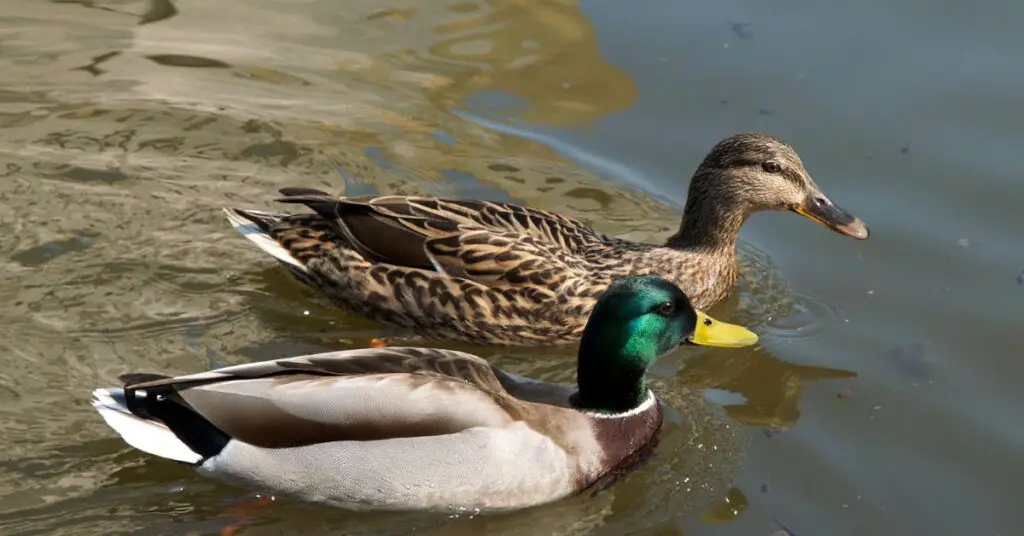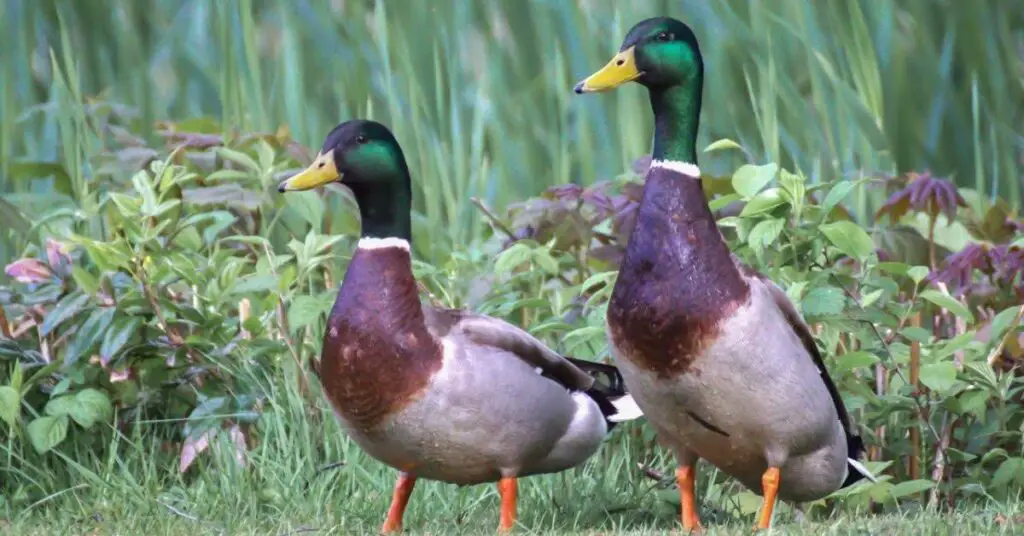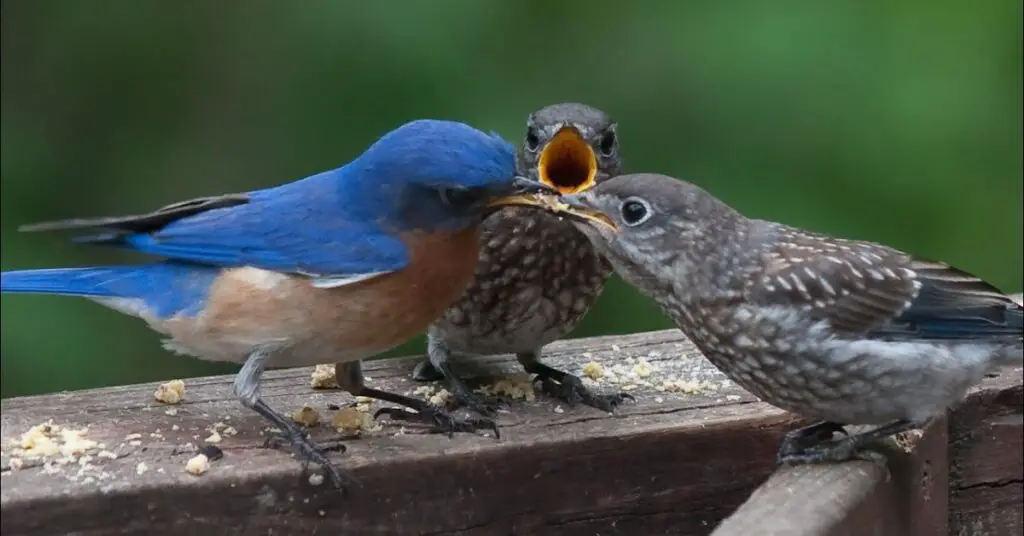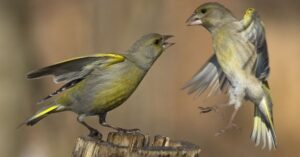Breeding season for wild birds can vary significantly depending on their geographical location. As winter fades and the first signs of spring emerge, many bird species begin their annual courtship rituals. Knowing when breeding season occurs is vital for anyone interested in observing these fascinating behaviors or participating in bird conservation efforts.
1. Understanding Bird Breeding Seasons In The USA
1.1 What Is A Breeding Season, And Why Is It Important?
Bird breeding seasons are critical periods in the annual life cycle of avian species, marked by heightened reproductive activity and the establishment of territories. Typically occurring in spring and early summer across the USA, these seasons vary based on geographical location and climate.

During breeding season, male birds often engage in elaborate displays to attract mates, showcasing their vibrant plumage and vocal prowess. This period is not merely about reproduction; it serves as a crucial time for establishing social hierarchies and ensuring genetic diversity within populations.
The availability of food resources plays a pivotal role; many birds synchronize their breeding with the peak abundance of insects or fruits to ensure that their chicks receive adequate nutrition.
1.2 How Breeding Seasons Vary Across Bird Species
Species in the northern reaches, such as the American Robin, often time their nesting to coincide with the peak of insect availability, whereas those in milder southern climates may initiate breeding earlier in the year, sometimes as early as January.
Breeding seasons can vary significantly even among closely related species. Take the case of the Eastern Bluebird and the Tree Swallow; while both may inhabit similar environments, the bluebird typically breeds from March to August, whereas the swallow may extend its season into late summer, adapting to fluctuating food supplies and habitat conditions.
2. Factors That Influence Bird Breeding Seasons
2.1 Climate And Geographic Location
Climate and geographic location are pivotal in determining the timing and success of bird breeding seasons. In temperate regions, birds often synchronize their reproductive cycles with seasonal changes that signal abundant food sources. As temperatures rise and daylight hours increase in spring, insects become more plentiful, providing essential nourishment for nesting parents and their young.
But in tropical climates, where conditions are relatively stable year-round, breeding may occur at different times based on local rainfall patterns or food availability, leading to varied reproductive strategies among species.
Geographic factors such as altitude also play a significant role. Birds residing in mountainous areas may breed later than their lowland counterparts due to cooler temperatures and delayed vegetation growth at higher elevations.
2.2 Food Availability And Habitat Conditions
Food availability and habitat conditions are pivotal factors that dictate the timing and success of bird breeding seasons. Species that rely on insects for feeding their young may time their breeding to coincide with peak insect populations, which often align with warmer temperatures and blooming vegetation.
2.3 Daylight Hours And Mating Triggers
Daylight hours play a pivotal role in triggering the mating behaviors of many bird species. As the days lengthen with the arrival of spring, increased sunlight stimulates hormonal changes within birds, leading to heightened reproductive activity.
3. Breeding Seasons For Common Bird Species In The USA
3.1 Backyard Birds: Robins, Sparrows, And Bluebirds
American robins typically begin nesting as early as March, capitalizing on the thawing ground to find earthworms and other food sources for their young.
The robin’s nest-building process is a meticulous affair, with females often using mud to bind together twigs and grass, showcasing their resourcefulness.
House sparrows, Exhibit a more communal approach to nesting. They breed throughout the warmer months, often forming loose colonies in urban settings.
Bluebirds, known for their striking plumage, prefer open fields and orchards for nesting. Their breeding season usually peaks in late spring, and they are unique in their reliance on old tree cavities or man-made boxes for shelter.
3.2 Waterfowl: Ducks And Geese
Waterfowl breeding seasons in the USA typically commence with the arrival of spring, as temperatures rise and daylight hours extend. For many species, such as mallards and Canada geese, this period is crucial for establishing territories and attracting mates.
Male waterfowl often engage in elaborate courtship displays, showcasing their vibrant plumage and vocal prowess to impress potential partners. The timing of these displays can vary significantly across regions; northern populations may start their breeding activities later than those in warmer southern climates, illustrating how environmental factors influence reproductive strategies.
Nest selection is another critical aspect of waterfowl breeding. Many ducks prefer secluded locations near water bodies, utilizing dense vegetation to conceal their nests from predators.
Geese, Often choose elevated sites to safeguard their eggs, demonstrating a fascinating adaptability to their surroundings. As the breeding season progresses, female waterfowl exhibit remarkable resilience and dedication, incubating eggs for approximately 28 days while males take on protective roles.
3.3 Raptors: Eagles, Hawks, And Owls
Eagles typically mate for life, returning to the same nest year after year, which they often renovate or expand. Hawks are more diverse in their nesting habits; species like the Red-tailed Hawk may choose a secluded tree or cliff ledge, while others might adapt to urban environments, showcasing their remarkable ability to thrive alongside human development.

Owls, Have unique strategies that set them apart from their diurnal raptor cousins. Breeding often begins in late winter to early spring, allowing them to time the hatching of their young with the peak abundance of small mammals.
3.4 Songbirds And Migratory Species
The breeding seasons for songbirds and migratory species in the USA are intricately tied to environmental cues, particularly changes in day length and temperature.
Migratory species like the Indigo Bunting or the Black-throated Blue Warbler rely on timing that aligns with food availability, often synchronizing their arrival with blooming plants and the emergence of insects.
4. Regional Variations In Bird Breeding Seasons
4.1 Eastern USA: When To Look For Nests
In the Eastern USA, the bird breeding season typically peaks from late March through July, with notable variations influenced by local climate and habitat. As temperatures warm, migratory species such as robins and blue jays return to their nesting grounds, signaling the start of this vibrant period.
4.2 Western USA: High-Elevation And Coastal Birds
High-elevation birds, such as the Mountain Bluebird and the White-tailed Ptarmigan, have adapted to shorter growing seasons, which dictate their breeding timelines.
Coastal birds like the Western Gull and the Black Oystercatcher experience different pressures due to the temperate maritime climate. Here, breeding typically begins earlier in the year, often as soon as March or April.
4.3 Southern USA: Longer Breeding Windows
The warmer climate allows many species to initiate nesting earlier in the year, often as soon as late February or early March.
Species such as the Eastern Bluebird and the Carolina Wren thrive in this environment, often competing for prime nesting sites and resources. The extended duration of breeding allows these birds to adapt to fluctuating weather patterns and local ecological changes, demonstrating remarkable resilience.
4.4 Northern USA: Short, Intense Breeding Seasons
In the northern USA, bird breeding seasons are characterized by a unique intensity that arises from the region’s short growing season. With winter lingering well into spring, many bird species have adapted to a narrow window for reproduction, often beginning their courtship rituals as soon as the last frost clears.
5. Signs That Birds Are In Their Breeding Season
5.1 Birdsong And Mating Calls
One of the most enchanting signs that birds are entering their breeding season is the dramatic increase in songs and mating calls. As temperatures rise and daylight hours extend, male birds become vocal powerhouses, using their melodies to attract potential mates.

5.2 Courtship Displays And Territorial Behavior
Courtship displays and territorial behavior are fascinating aspects of avian life that signal the onset of the breeding season. During this time, male birds often engage in elaborate performances to attract potential mates.
5.3 Nest Building: Materials And Locations
Nest building is one of the most fascinating aspects of avian behavior during breeding season. Birds are meticulous architects, choosing materials that not only provide structural integrity but also offer insulation and camouflage.
Common materials include twigs, grass, leaves, feathers, and even human-made items like string or plastic.
The location of a nest can be just as intriguing as its construction. Different species have unique preferences; for example, some prefer the safety of dense foliage, while others may opt for higher elevations on tree branches or man-made structures.
6. How To Support Birds During Breeding Season
6.1 Providing Safe Nesting Sites On Your Property
Creating safe nesting sites on your property is essential for supporting local bird populations during breeding season. One effective way to achieve this is by installing birdhouses tailored to the species in your area.
Consider factors such as size, entrance hole dimensions, and placement height; these specifics can significantly affect whether birds will choose your house over others. Ensure that the materials used are durable and weather-resistant, as harsh conditions can deter nesting attempts.
6.2 Feeding Birds During Nesting And Rearing
Feeding birds during the nesting and rearing season is crucial for their survival and success, as they require extra energy to support their growing families.
Provide mealworms, suet, or specially formulated birdseed blends rich in protein, which will not only attract adult birds but also provide essential nutrients for their chicks.
6.3 Avoiding Disturbances To Breeding Birds
During the breeding season, many birds are particularly vulnerable as they invest significant energy into nesting, incubating eggs, and raising their young. One of the most effective ways to support these feathered parents is to minimize disturbances in their habitats.
7. Challenges Faced By Birds During Breeding Season
7.1 Habitat Loss And Urbanization
Habitat loss and urbanization present significant challenges for birds during the breeding season, fundamentally altering their reproductive success. As cities expand and natural landscapes are transformed into concrete jungles, many bird species find their nesting grounds destroyed or fragmented.
7.2 Predation And Human Interference
During the breeding season, birds face a myriad of challenges, with predation being one of the most daunting. Nesting sites, often chosen for their accessibility and safety, can inadvertently expose birds to predators such as cats, raccoons, and even larger birds of prey.
Human interference compounds these challenges significantly. Urbanization has led to habitat loss and fragmentation, pushing birds into increasingly precarious environments.
7.3 Weather Extremes: How Birds Cope
Weather extremes pose significant challenges for birds during the breeding season, forcing them to adapt their behaviors and strategies for survival. As climate patterns become increasingly unpredictable, birds must navigate a range of conditions—from unseasonably cold temperatures to scorching heat and sudden storms.

Many species have developed remarkable coping mechanisms; some birds may adjust their breeding timelines to align with favorable weather, ensuring that their chicks hatch during periods of abundant food availability.
Conclusion
The breeding season for wild birds typically occurs in the spring months, varying slightly depending on geographic location and species. During this time, birds engage in courtship behaviors, build nests, and raise their young.
Factors such as climate, food availability, and habitat conditions can influence the timing and success of breeding efforts.
FAQ’s
How Do Birds Mate?
Once a female chooses a male, the mating process typically involves a brief copulation, during which the male transfers sperm to the female. Most birds lack external genitalia, so they perform what is known as a “cloacal kiss,” where the cloacas (the common opening for excretory and reproductive tracts) of both birds come into contact.
Do All Birds Breed In The Spring?
Not all birds breed in the spring, although many species do follow this seasonal pattern. The timing of breeding can vary significantly depending on the species, geographical location, and environmental conditions.
How Long Does The Breeding Season Last?
The breeding season for animals varies significantly depending on the species and their specific environmental conditions. In general, many mammals have a breeding season that lasts from a few weeks to several months, often coinciding with favorable weather conditions and food availability.
How Long Is Parrot Breeding Season?
Parrot breeding season varies by species and location but generally lasts from spring to early summer. In tropical regions, it often coincides with the rainy season, when food is abundant.
- How To Keep Bees Away From Hummingbird Feeders - March 20, 2025
- How To Attract Owls To Your Yard - March 11, 2025
- Breeding Season For Wild Birds - March 9, 2025








